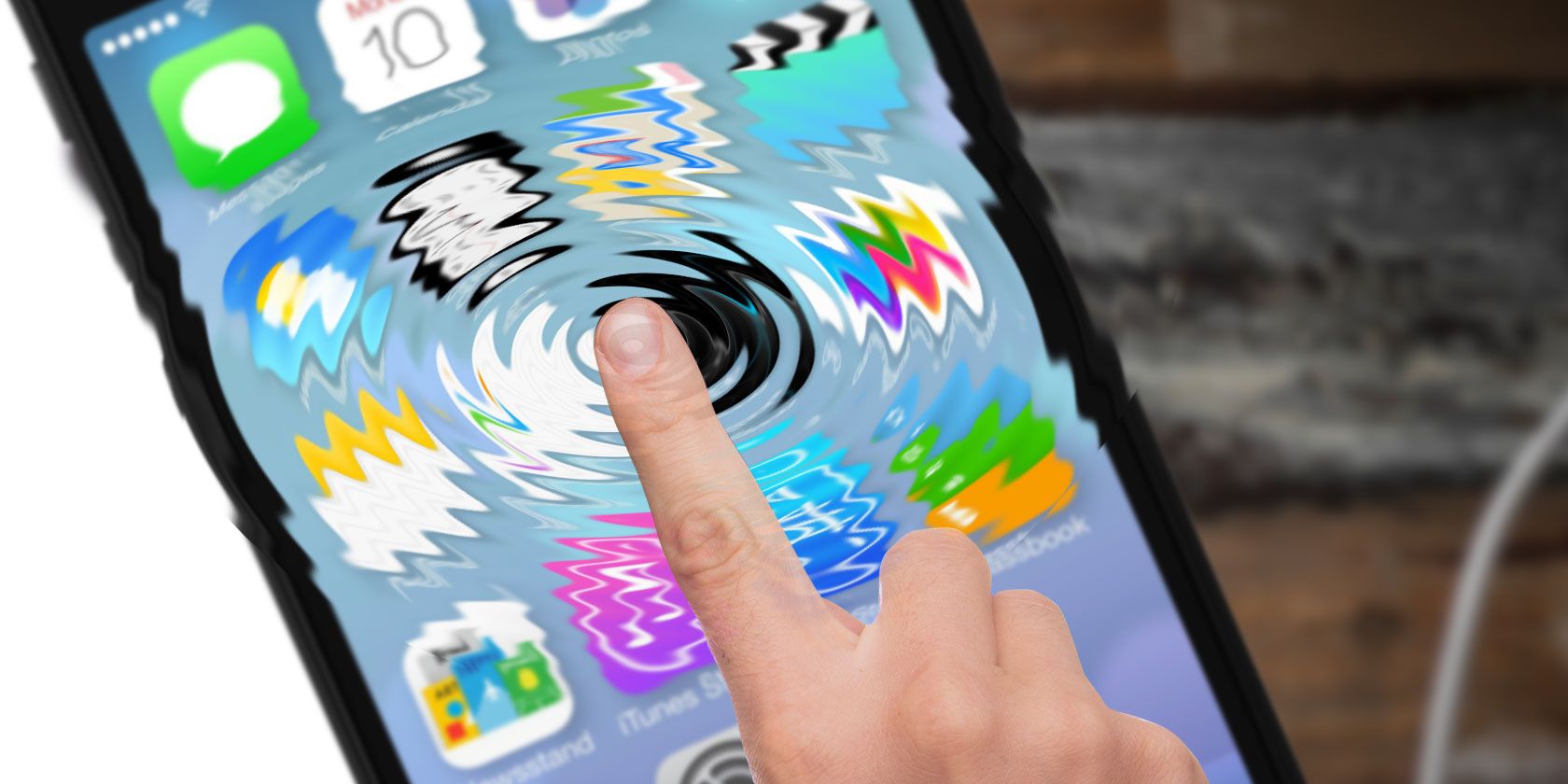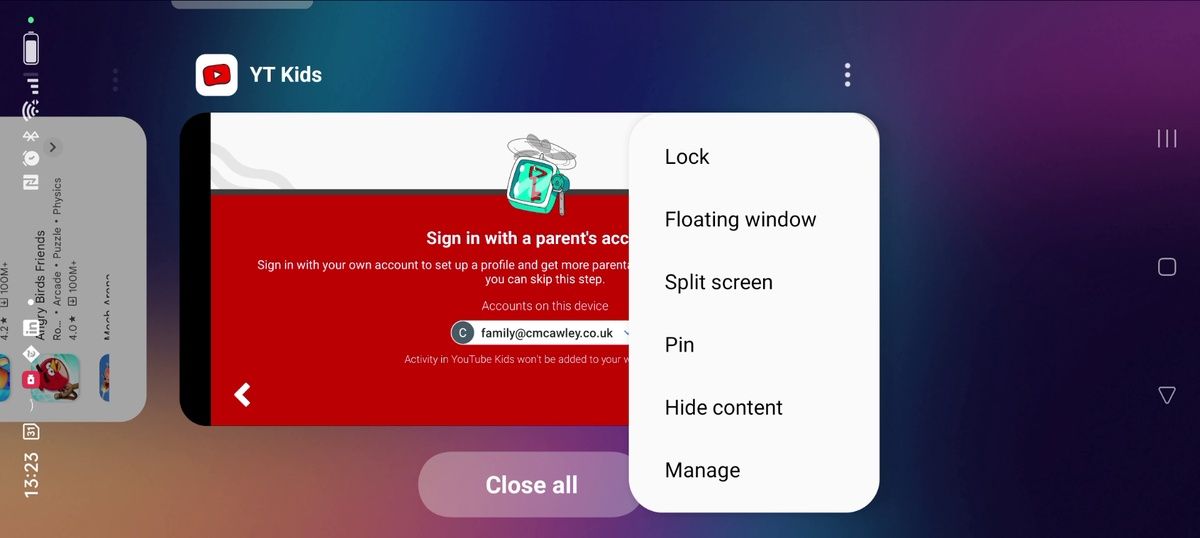As display technologies improve, so has touchscreen sensitivity. But touchscreen displays are prone to accidental taps. Since almost all mobile devices now use a touchscreen instead of physical keys, senior citizens and kids might find themselves causing accidental inputs.
But did you know you can temporarily disable the touch screen controls on your mobile device?
Why You Might Lock Your Touchscreen
Unintentionally interacting with your phone is frustrating. It's also something that happens to everyone from time to time.
Examples include:
- While watching a video, an accidental touch pauses or exits
- When you're listening to music, the track pauses or skips
- Disrupting the GPS display when your phone is mounted on the dashboard for a map-guided journey
- Kids messing around with phone settings instead of watching a video or playing a game
- Recording video is paused or stopped
- Ghost touch issues
These last two points are worth further exploration.
Ghost Touches and Water
Some phones have been plagued by ghost touch problems in the past. This is a touchscreen problem wherein the screen responds to touches you're not actually making. Such problems can make your smartphone experience quite annoying.
One temporary solution is to block touch interaction for a selected area of the screen and to disable part of the touchscreen. While you would need to fix the faulty screen eventually, it's a good short-term fix.
With the increasing number of waterproof phones in the market, it's tempting to film underwater. But usually, there's a certain amount of ghost touching involved as water comes into contact with the screen.
Even if you're simply making videos in the rain, accidental touches can cause pauses or even end the recording. It'd be great if you could disable the touchscreen, so you can record video flawlessly and lock your screen.
Lock Your Android Phone to a Single App
If you find yourself struggling with the app-related problems mentioned above, disabling the touchscreen temporarily can help. However, there's a better solution rather than having to disable the touchscreen entirely.
App pinning is an Android feature that lets you lock your phone to a single app.
For instance, you can "pin" the YouTube Kids app. Your kids will be able to navigate around inside this app, but they won't be able to switch to other apps.
Here's how to enable the App pinning feature in Android 13:
- Open Settings > Password & security > System security
- Find and tap App pinning (you can also search "app pinning" to find it)
- Set to On (note that if you have Navigation gestures enabled, this must be deactivated to use App pinning)
- You can also enable Lock screen after unpinning, a useful backup in case the feature is disabled
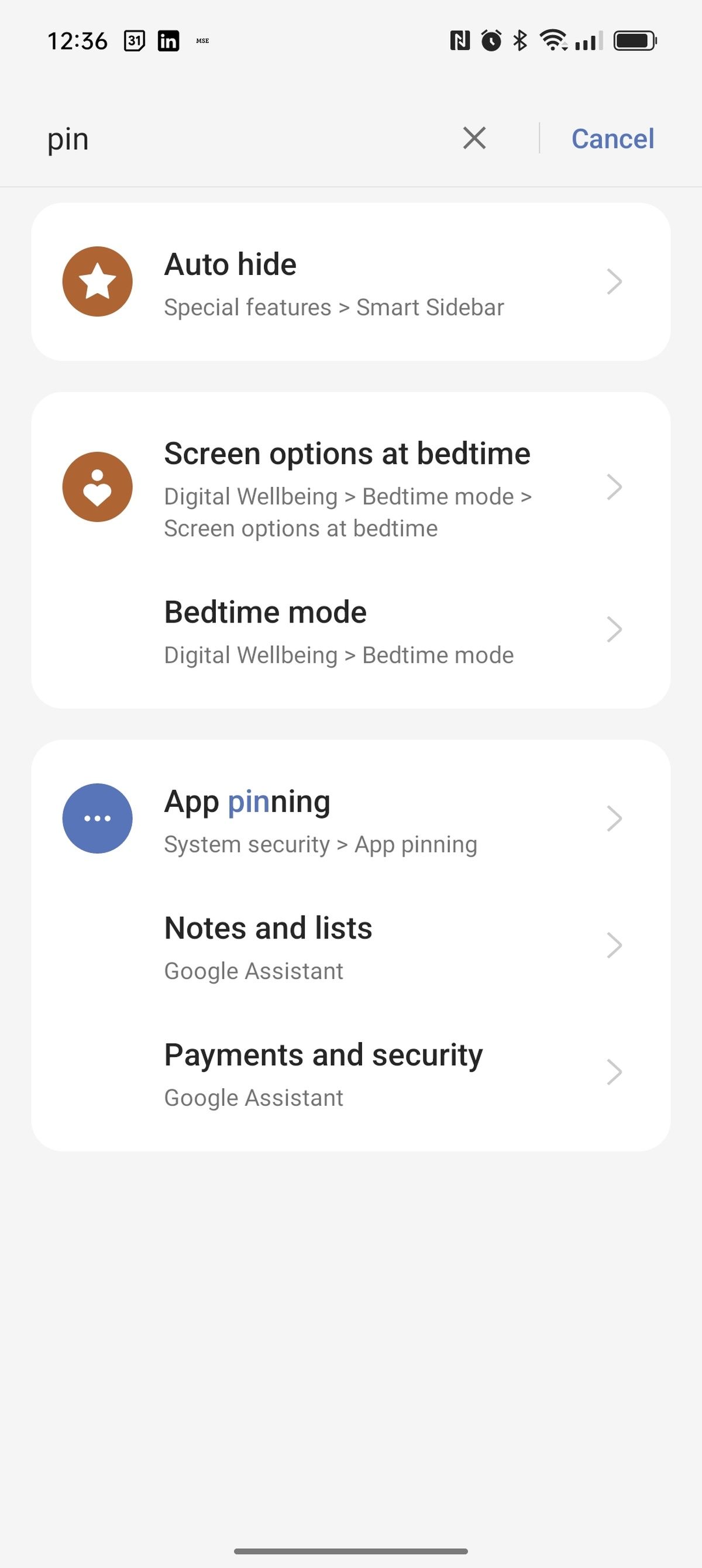
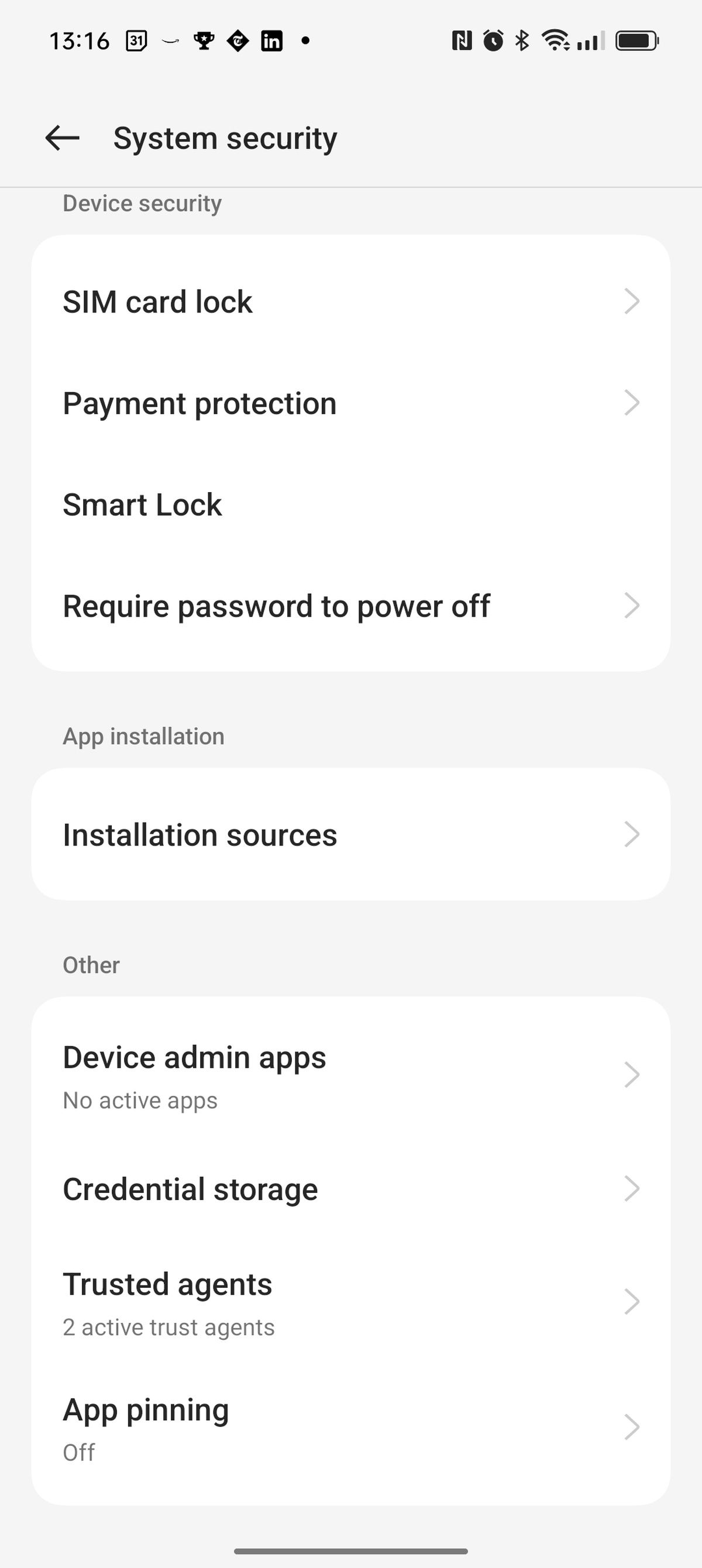
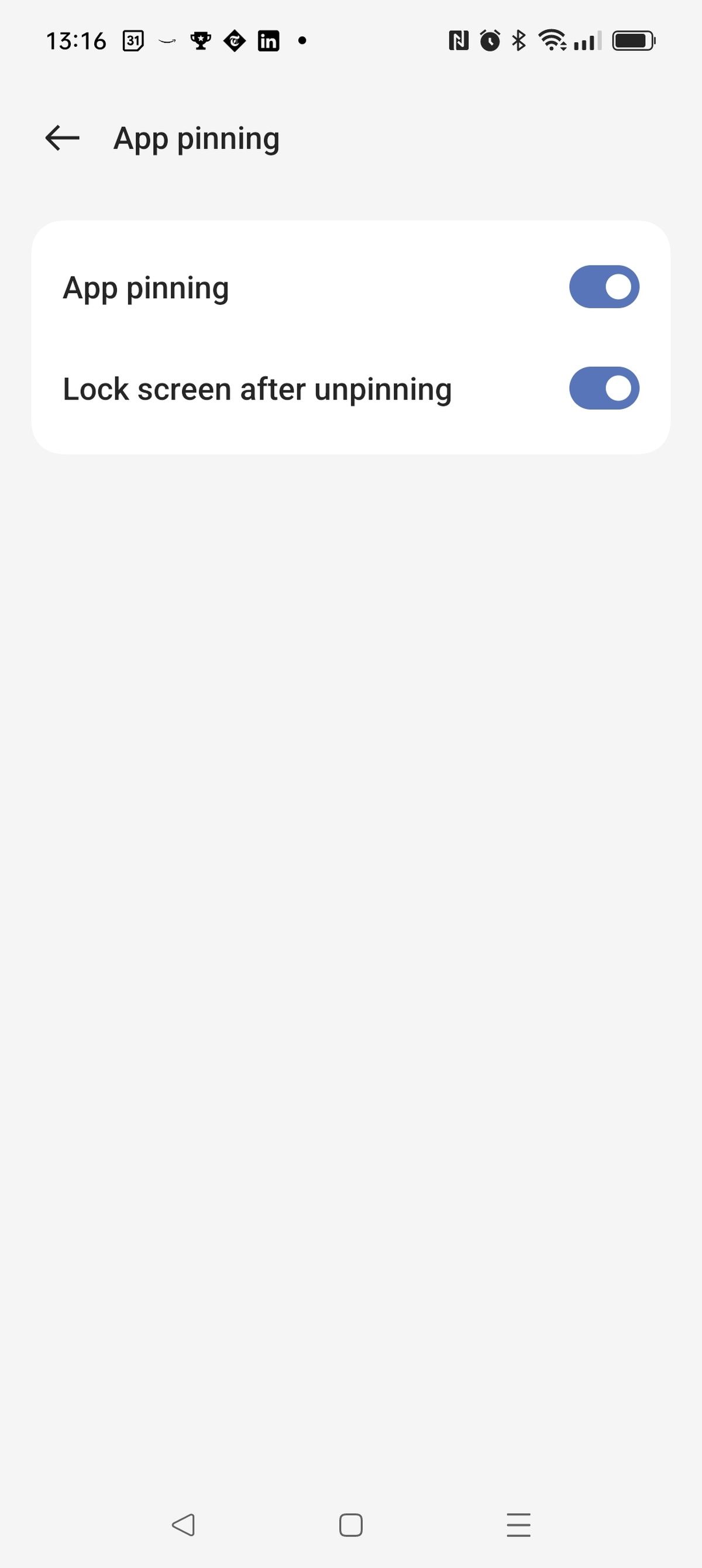
To pin an app:
- Launch the app you want to pin
- Tap Recents
- Swipe to the app
- Tap the Menu
- Select Pin
You’ll receive instructions on how to unpin the app. This is usually by holding Back and Recents, although on some devices dual taps are disabled along with navigation gestures, so a reboot may be required.
Using Screen Pinning on Older Android Models
On Android 8.1 and earlier, freeze your phone screen as follows:
- Open the app you want to pin.
- Tap Overview/Recent apps button.
- Swipe up on the Recent card and tap the Pin icon at the bottom-right.
If you have Android 9 or newer, use these steps instead:
- First, open the app you want to pin.
- Open the app switcher, which will depend on your method of navigation.
- If you use the classic three-button navigation, tap the square Recents button.
- If you use the newer two-button navigation or Android 10's revised gestures, swipe up from the bottom of the screen and hold for a moment to show your recent apps.
- Tap the icon at the top of the app you want to lock, and choose Pin.
To unpin an app with three or two-button navigation, just hold the Back button on your device for about five seconds. If you have Android gesture navigation enabled, swipe up and hold for a moment instead. You'll have to enter your unlock PIN, after which the app will unpin.
Unfortunately, this feature works fine in only a few instances, such as when you want to lock your YouTube screen. It doesn't solve the other problems discussed above, such as the ghost touch problem.
For this, problems you'll need to actually disable your touchscreen.
How to Disable Touch Screen Input on Android
Another way to lock your phone screen and disable touch screen input on Android is by downloading one of the many touch lock apps.
One such app is Touch Protector.
After installation, you'll need to grant the app permission to display over other apps and to display notifications. It also requires the setting of an unlock pattern.
To use the Touch Protector, you have various options that can be enabled. These are grouped into tabs: Shake, Proximity, Upside Down, and Hard Keys. There is also the option to allow access to specific settings in the While Locked tab.
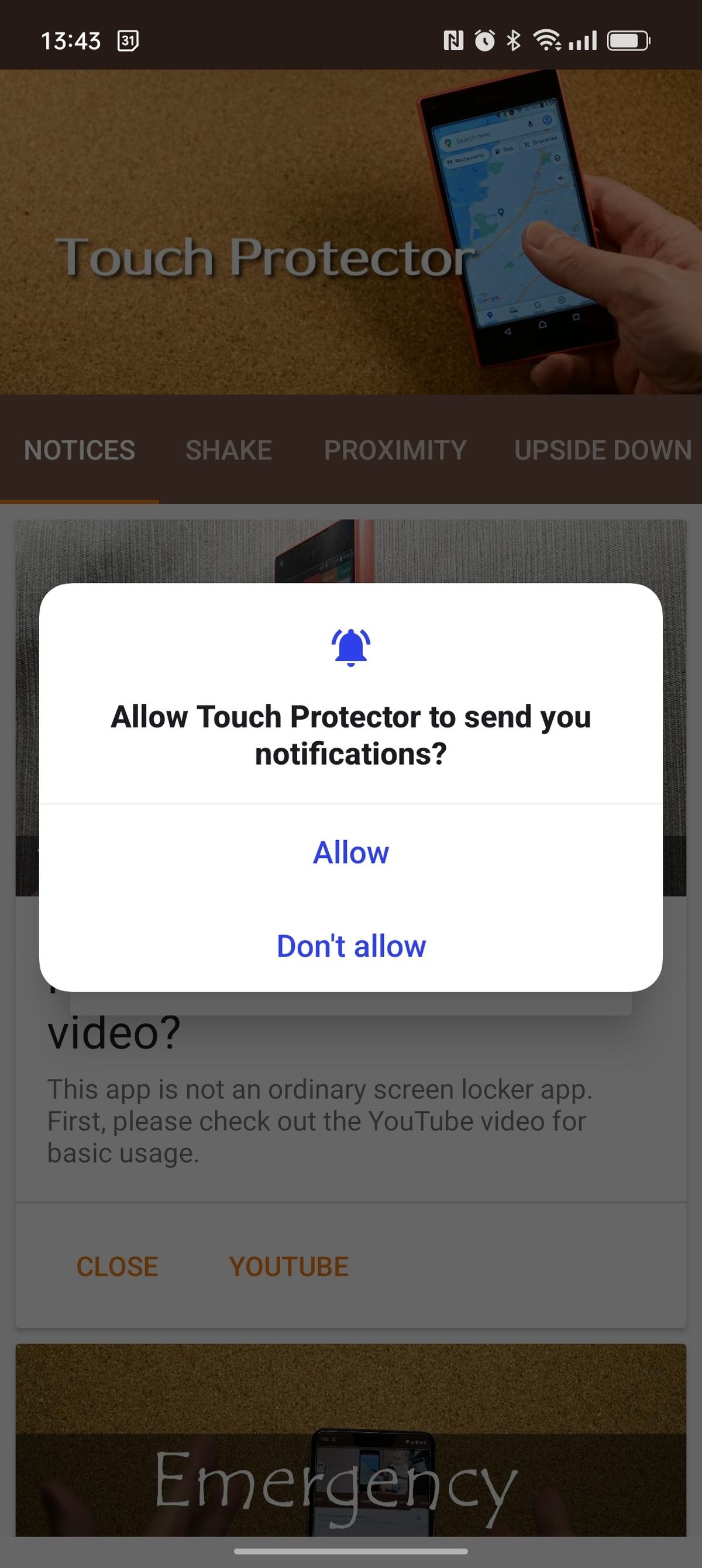
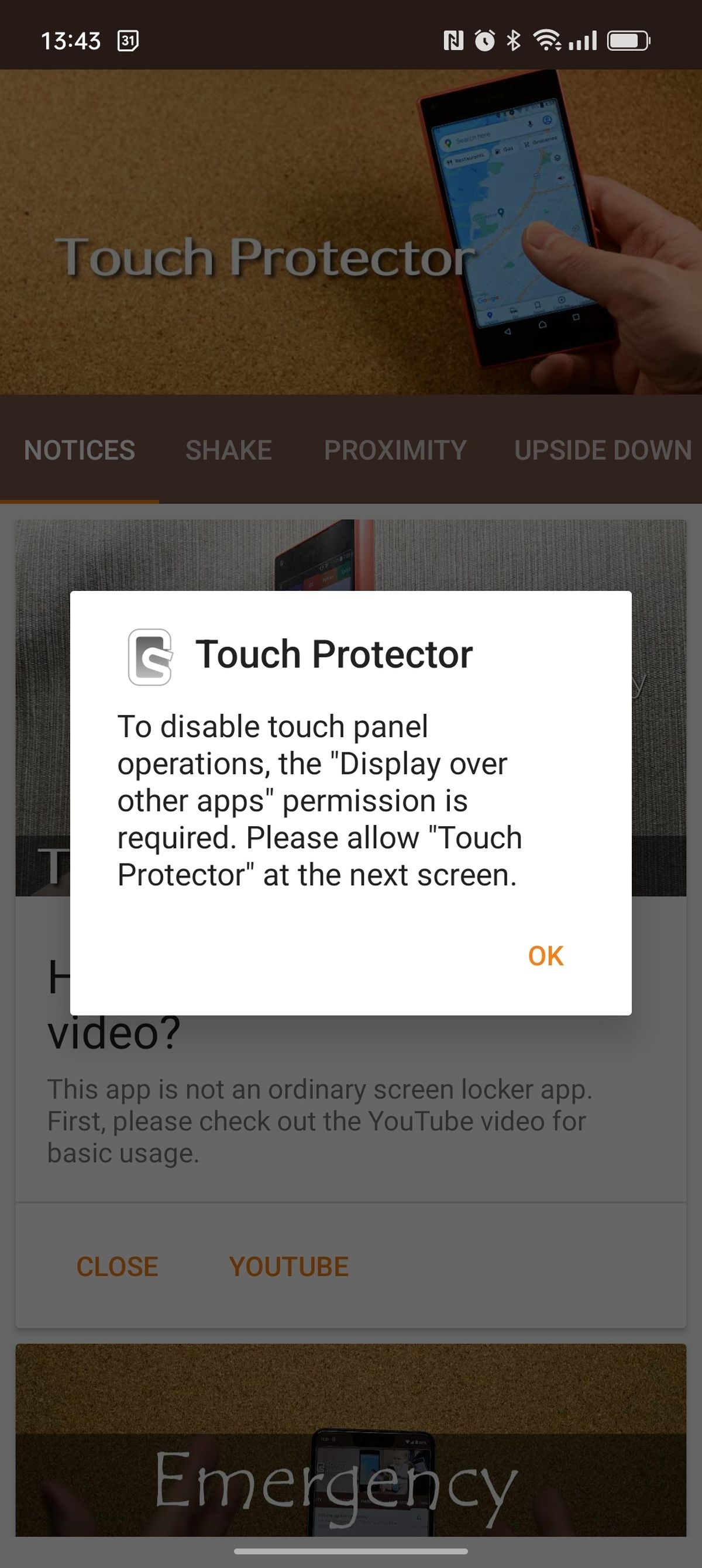
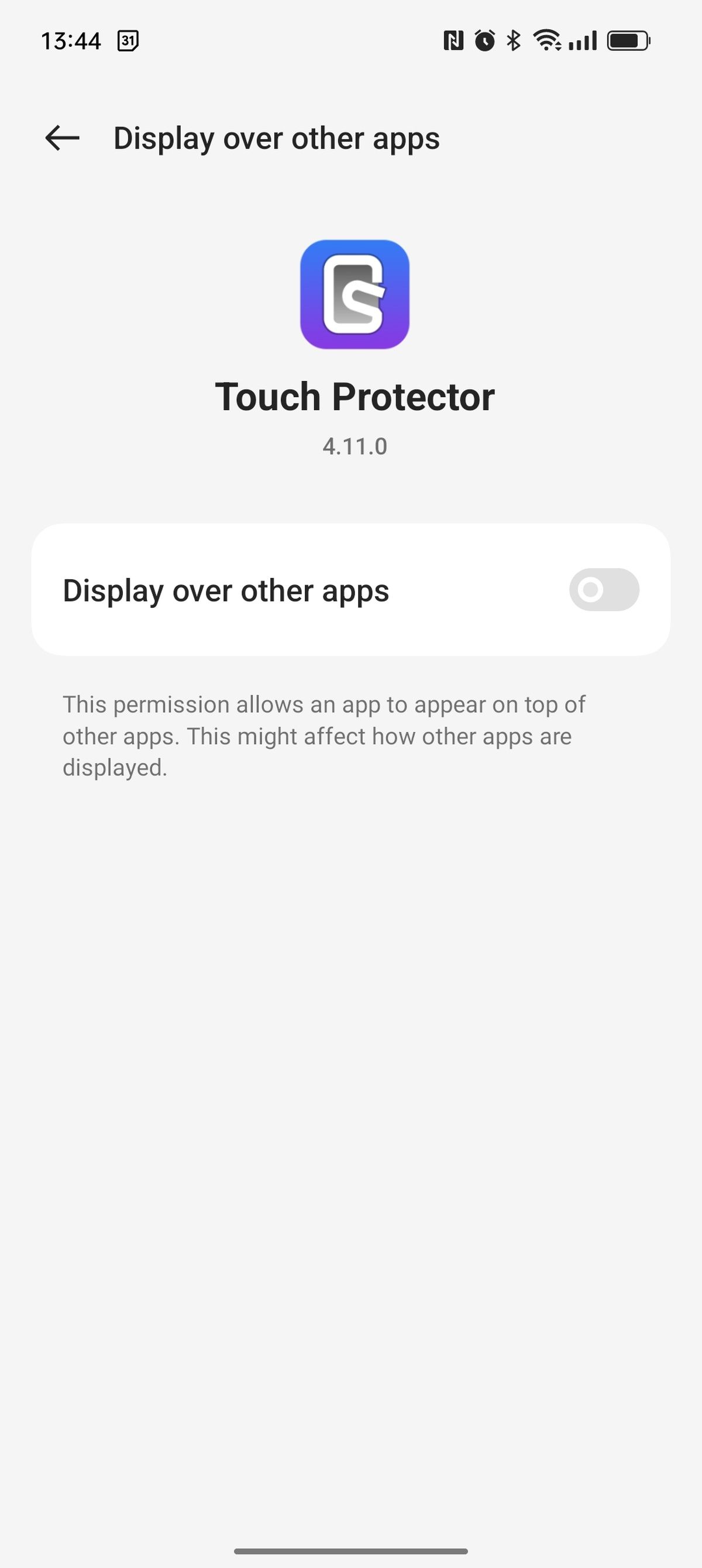
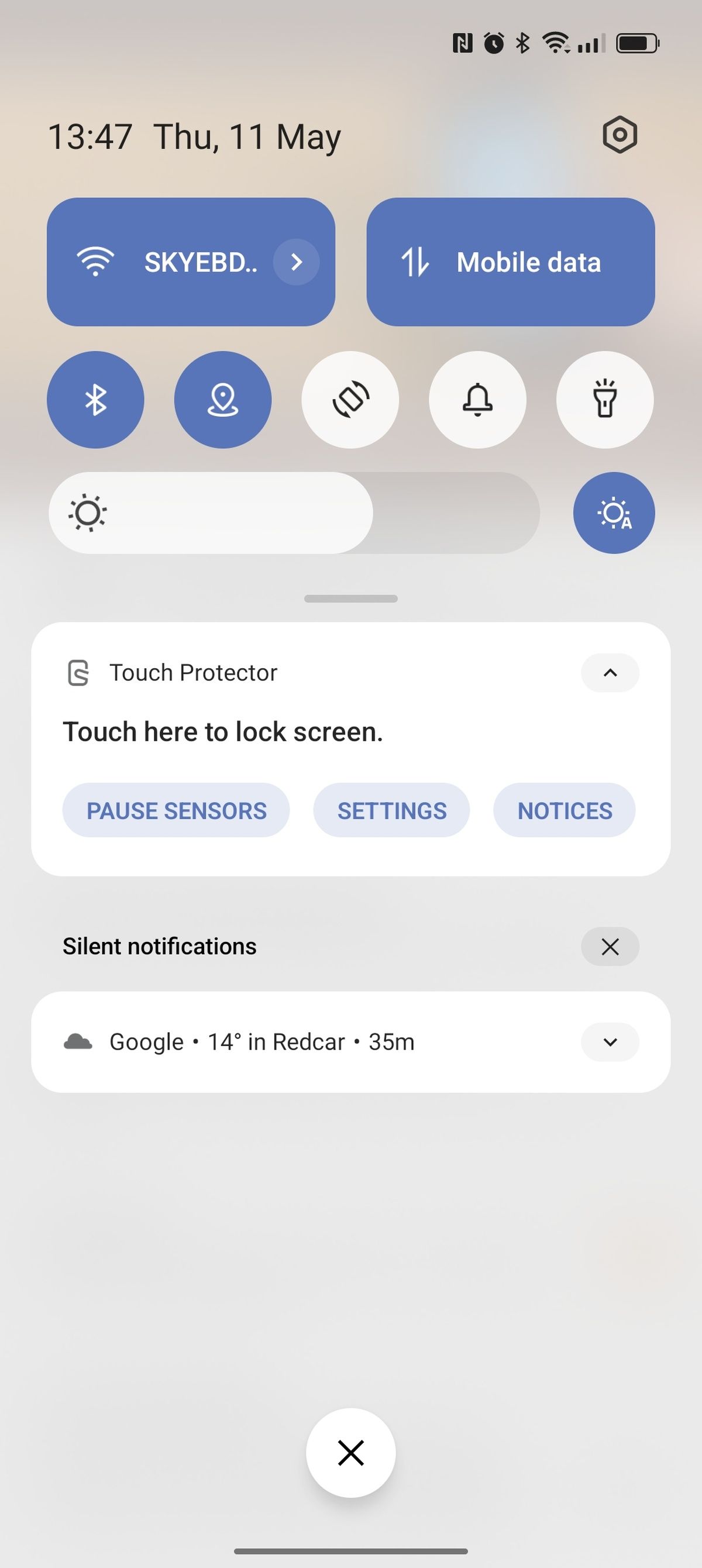
When you want to lock the display, select an unlock method enabled (volume up is enabled by default), then:
- Open the Notification area
- Tap Touch here to lock screen
Your phone screen will now be disabled.
To unlock touch, simply use the chosen unlock method. Your phone touch will return to normal.
Download: Touch Protector (Free)
Disable Touchscreen Input on iPhone
The iPhone comes with built-in functionality to temporarily disable touchscreen input. Dubbed Guided Access, this feature lets you disable certain areas of the screen and even lock down physical buttons. Here's how to enable Guided Access:
- Open Settings > Accessibility > Guided Access.
- Enable Guided Access.
- Tap on Passcode Settings to set a Passcode or Touch/Face ID used to end Guided Access.
- Finally, enable Accessibility Shortcut. This lets you triple-click the Home button to enter Guided Access anytime.
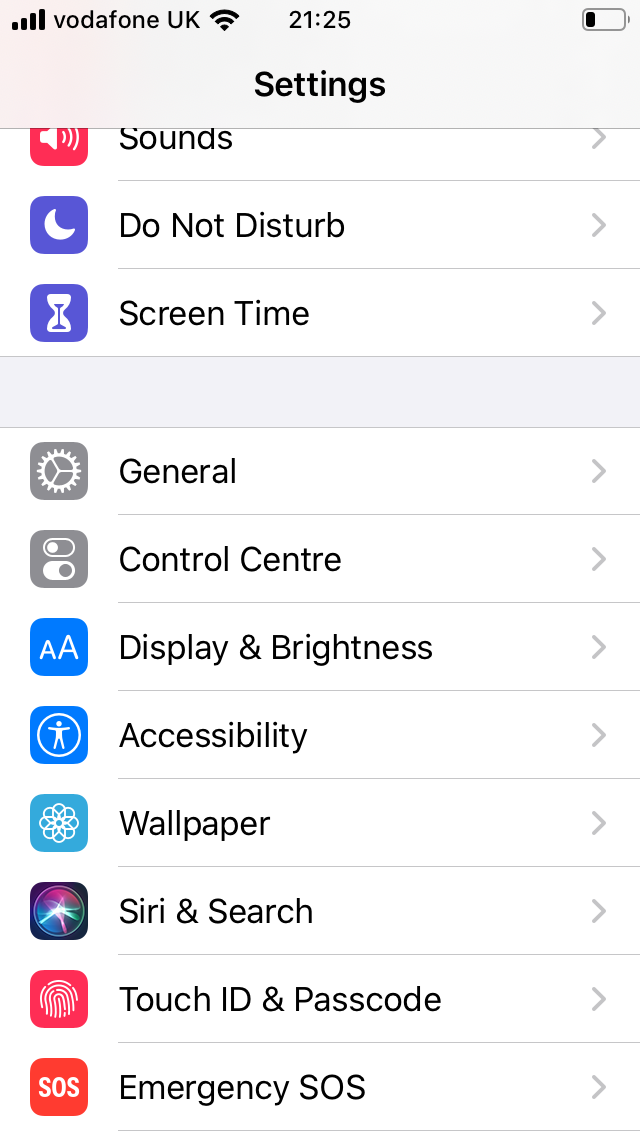
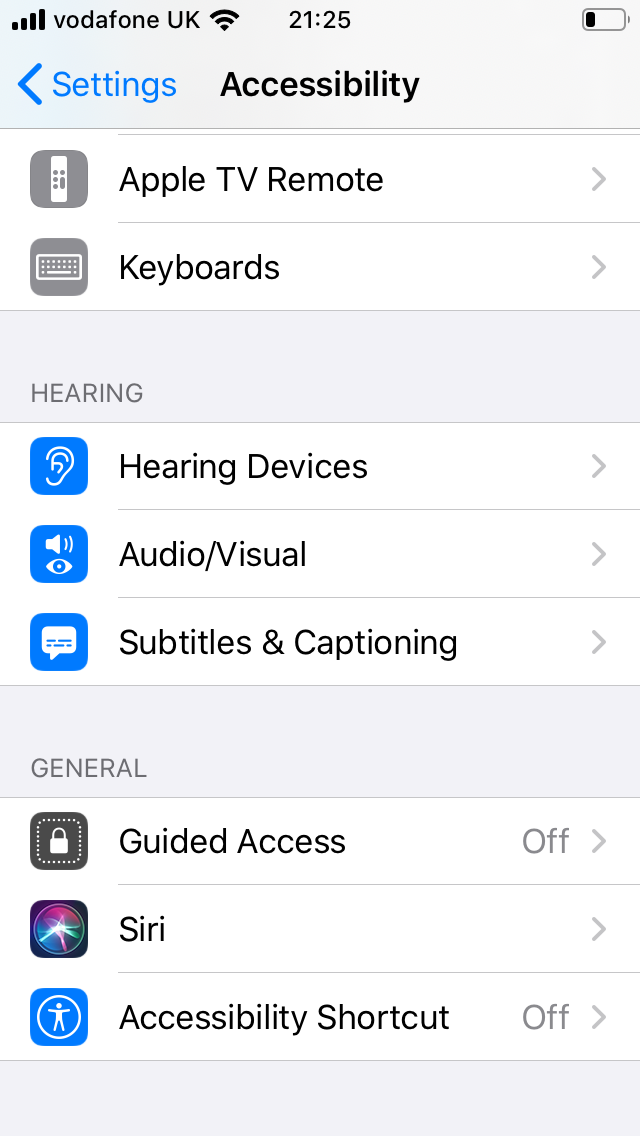
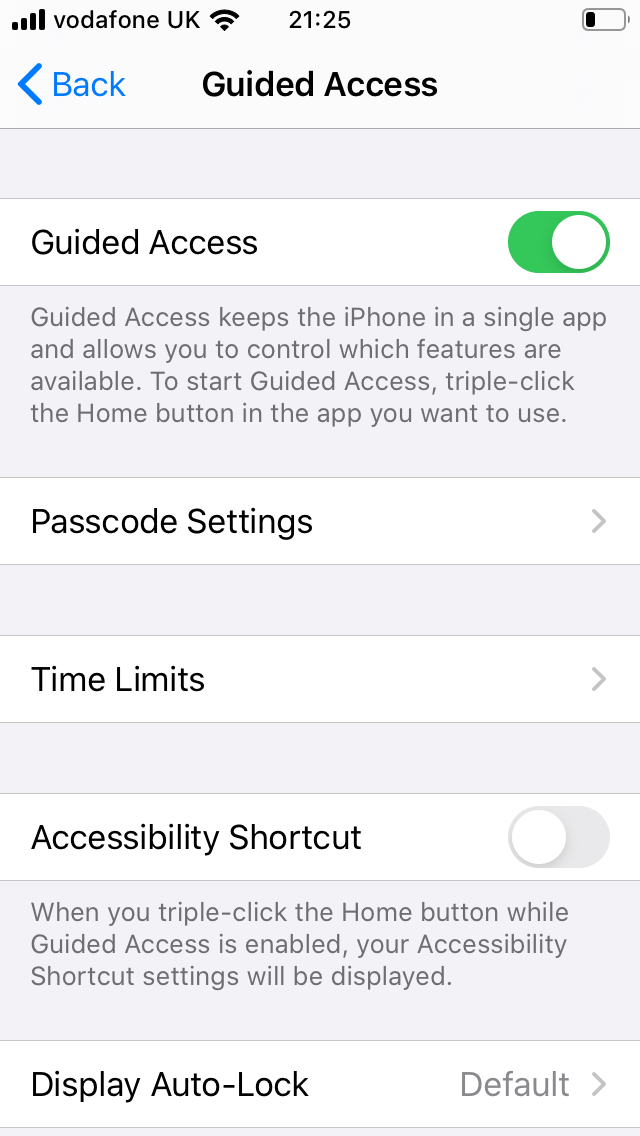
Once enabled, here's how to use it:
- Open the app you'd like to lock down.
- Triple-click the Home button to enter Guided Access.
- Circle the areas on the screen you would like to disable. If you'd like to disable touch on the entire screen, draw around the complete screen area.
- Tap on Options in the bottom-left corner to disable the Power or Volume buttons.
- Select Done.
- Finally, tap on Start at the top of the screen to start Guided Access.
The disabled areas of the screen will appear grayed out and will not respond to any touches.
To exit Guided Access, triple-click the Home button. Enter the correct passcode or scan with Touch/Face ID to exit. Our full iPhone Guided Access tutorial explains this handy iOS accessibility feature in more detail.
Locking Your Phone's Screen Is Easy
Whether you want to prevent accidental interruptions while recording video or avoid misuse by a mischievous child, disabling your touchscreen temporarily helps.
It's possible on Android natively or via an app, as well as on iPhone, thanks to the Guided Access feature. In short, you should be able to lock your touchscreen on Android or iPhone with little effort.
Don't forget that locking your whole phone is important for security too, especially if your device is lost or stolen.

